This is a guest contribution from Tim Soulo.
This year I've managed to grow a photography blog by 500% in about 6 months and I think I've learned something along the way.
I was following five fundamental things that you can learn from any marketing blog, but I like to think that I've made a few personal discoveries about each of them.
And the most important of all the discoveries is how these five fundamentals unite into one solid strategy. Once you comprehend it your blog will start growing.
So let's see if I'm good enough in sharing what I've learned.
1. Write Mind Blowing Content

Image copyright Robert Kneschke – Fotolia.com
I know it's been said thousands (if not millions) of times how much the quality of your content matters. But let me try and give you a deeper understanding of this matter.
Poor content doesn't get shared on social networks.
Of course you can always trick people into sharing your articles with all these "Social Locker" plugins (those will hide the content from readers unless they click on social sharing buttons). But this will only get you so far.
If your content is poor there's no motivation for visitors to click the "tweet" button.
Unless of course you have a raving community of fans, who will support just about anything you do. But…
Poor content doesn't attract fans.
How can you expect a person to stick with your blog if he can hardly make himself read the first few paragraphs of your boring article?
Remember this: every time you allow yourself to publish a mediocre article, you lose a few potential fans (and maybe a few existing ones as well).
Most free content is poor content.
I think many blog owners will support me on this one. How many guest post offers do you guys get per week? And how many of them are actually worth being published at your blog? Hardly a few.
And that is one of the reasons everybody hates SEO guys.
They order cheap content from freelance copywriters (like $5 for a 500 words article) and then send out canned emails to every blog they're able to find, offering this poor content.
In their turn, lazy blog owners are often tempted by the chance to publish a readymade article on their blog. Somehow many of them still think that the more posts you publish, the better your blog performs.
And, to be honest, it's not just SEOs. Many bloggers will challenge themselves to something like "write 3 guest posts per day for 30 days" in order to promote their blog.
But can one write 90 awesome articles in a month? No. Maybe 30? Sorry, but No. I guess this very post will take me 23 days to be finished (but I'm not doing this full time of course).
Even the content you pay for can be lame.
At a certain point you may feel you need to hire a few people to help you with your blog. Well, the fact that you pay them doesn't mean they will write great articles.
Unfortunately most of the socalled "freelance copywriters" will treat their work as a routine, where they exchange a certain amount of words to a certain amount of money. While in an ideal world, they should be looking for someone to pay them based on their level of expertise and the amount of effort they put into their work.
So now you understand why poor content won't get you anywhere. Here's what you can do about it: learn to write awesome articles.
2. Get Serious About SEO

People should be able to find your awesome articles. And Google is where they will search for them.
But you have to do quite a few things to make your articles rank well in Google.
On the photography blog, that I was talking about earlier, the traffic from Google was growing by 1015% each month. And surprisingly I didn't do much to achieve that.
So what are the basics to get you started?
Learn to pick relevant keywords.
As they tap into SEO, most bloggers will always go for very broad and popular keywords… and fail miserably.
I mean for a post titled "10 Leather Camera Bags Reviewed", newbie bloggers will pick the keyword "bags" as it's more popular and should bring more traffic once you're on the first page of Google.
But what they don't understand is:
1. Shorter, broader, more popular keywords are muchmuch harder to rank for. So you're doomed to stick somewhere at page 15 of Google's search results with no visitors.
2. A person searching for "bags" is not necessarily interested in "camera bags", with even a smaller chance of being interested in "leather camera bags". So why do you want to show him your article anyways?
Think logically. You want to show your post to people that search for "leather camera bags" or, to be even more precise, "leather camera bag reviews". That's the keyword you should go for.
Learn to optimise your articles.
I guess the majority of you guys know it already, but I can't just make gaps in this article, so…
In order to optimise your article for a certain keyword, you should put it to:
- Title of your article;
- Headline of your article;
- URL of your article;
- Meta Description of your article;
- Content of your article.
And there's a handy free plugin for WordPress that will help you do this SEO by Yoast.
Build links.
The last ingredient of your success in Google is links pointing from other sites to your article.
Where do you get them? Just reference your articles all the time!
- Writing your next post? Reference a few of your past articles.
- Writing a guest post for another blog? Put a few links to your own articles.
- Writing a comment somewhere? See if a link to a post of yours would be relevant.
- Writing a post on forums? Well.. you've got the idea.
The more trusted links your article has coming in, the better it ranks in Google. So you should get serious about your SEO starting today!
Ask any blogger and he will tell you that Google is responsible for 40% to 70% of his total blog traffic. That's definitely something worth investing some of your time.
3. Master the Art of Guest Blogging

Google is huge, but it takes lots of time to build traffic from it. How about some instant visitors?
You can get them quite easily by tapping into the existing audience of relevant blogs that dominate your niche. How? Just write them a guest article.
But not every guest article will bring visitors to your website. Only those that follow the next two principles:
Make readers care about you.
Your writing style is super engaging good for you. You're sharing tons of tips and giving out lots of value well… I guess… thank you? But why should readers care about YOU anyways?
Here's the thing: people won't read your author byline and follow the link to your personal blog, unless they are interested in you.
Take Problogger per se. There are dozens of people, who write exceptionally well, but do you remember all their names? Most of them share super valuable advice, but again, can you recall if they have personal blogs?
So how do you make people care about you? The answer is damn easy: tell stories about yourself!
Did you notice how I started this article? "This year I've managed to grow a photography blog by 500% in about 6 months…"
This is a part of my personal story which helps me to differentiate myself from the rest of the guys who share cool articles at Problogger.
To be honest, this particular fact is not too memorable, but you can always add some extra information about yourself later in the article.
So since we're speaking about guest blogging… The very first guest post I wrote got published at Moz.com (a very popular SEO/Marketing blog) and to my sincere surprise it became a Top Post of 2010 in three categories: "thumbs up", unique visits & retweets. Which makes me kind of a big deal (just kidding).
See how it works? Now you are interested in my persona a little bit more, so there's a better chance you will check my author byline.
It's not that hard to tell stories about yourself, unless of course there's nothing too exciting that you can share. Well, why don't you DO something exciting, get some impressive results and go tell everyone about it?
PS: I didn't know about the storytelling trick back in the days, so sadly this huge guest post I wrote for Moz.com didn't land me much traffic.
Reference your articles.
Most bloggers don't like it when you "self promote" too much. But hey, everyone understands that the primary reason why you're contributing an article somewhere is to promote yourself and your own blog.
So just don't go overboard with linking out and you'll be fine. Make sure you're referencing only articles that truly deserve attention and make sure they fit nicely into the post.
I think the best way to link out is when you mention something that deserves an article of its own and by a lucky coincidence (hint! hint!) you already have that article published earlier on your own blog.
And yeah, the actual article that you're contributing should be perfect in all senses! This way the blog owner won't resist, even if there are a few of your links here and there.
Just to wrap it up, don't waste your time writing numerous guest posts if you don't know how to make readers interested in you and don't have any solid articles on your blog to reference.
4. Outreach Is Your Gun Powder
Let's say you have a friend with 100k followers on Twitter. You've just published a new article and you ask him for a tweet…
Bam! A couple hundreds of visitors land on your newly published article immediately! You wish you had more friends like that, right? So just work on it!
Connect with other bloggers.
I'm not necessarily talking about the big guys. They are already overwhelmed with people, asking them for "small favours".
You can start with bloggers that have the same size of the audience that you do, or maybe a little bit bigger. They are much easier to connect with and who knows, maybe in a year some of them will grow really big.
Oh, and by the way, once you contribute a guest article somewhere that's a perfect way to start building a relationship.
Later you can exchange tweets, reference each other in your articles and maybe even mention each other in your email newsletters.
Mention people and let them know about it.
Surprisingly enough this doesn't necessarily refer to mentioning other bloggers in your articles (though this tactic has proven to work really well).
When I was running a photography blog, we did a series of articles like:
- 50 Brilliant Photo Sites of Professional Photographers
- 50 Awesomely Inspiring Tumblr Blogs for Photographers
- 100 Incredibly Tasty Instagram Accounts for Foodies to Follow
And then we went ahead and reached out to everyone saying that they were featured in our article.
As a result, most of the guys "liked" and "tweeted" the articles they were mentioned in. Their friends saw that and did the same, which was kind of a chain reaction.
In other words, when you mention 100 people in an article and let them know about it prepare for a noticeable traffic spike.
But remember, at the end of the day it all comes down to the quality of your content. If your articles are lame people won't care about them, even if you point them personally.
5. Make Your Visitors Stick

Most bloggers refer to it as "community building", but you won't build a community unless you make your visitors stay at your blog right after their first visit.
When you've mastered the first four fundamentals that bring a plethora of visitors to your blog, it would be really silly to just let them bounce and never come back.
Take their email address.
Once you have it, you can bring back a person to your blog anytime you want (and do all sorts of other cool things).
But most people won't just give you their email address for nothing. That is why most pro bloggers are offering tons of free stuff in exchange for your email: pdf ebooks, email courses, free downloads, exclusive updates, etc.
Three best locations for your email capture form with a freebie are:
- popup email form upon first visit;
- sidebar email form;
- email form below the post.
If you ask me, I use all three of them on my own blog, with popup form bringing me the most email subscribers.
Interlink your articles
Remember the trick with mentioning something that deserves an article by itself and actually linking to your own post?
Well, each article on your own blog should be full of such cliffhangers that make it impossible for readers to get a feeling that they've already learned everything they needed.
Show them your best content
Most visitors are likely to leave after reading the article they've landed on. So your job is to advertise them your most amazing content till they're still here.
I'm talking about:
- "popular posts" section in your sidebar;
- "related posts" section at the end of your article;
- resource pages that list the best articles of your blog.
Once they read your best work they are much more likely to stick around and follow the future updates of your blog.
Get rid of the clutter
I don't remember where this thought comes from, but I like it a lot:
"If people don't click a certain element on your website you should either replace it or remove it."
Learn analytics and put tracking everywhere. Try to make your website a black hole where people can easily get in, but can't get out. Everything on your blog should be carefully crafted to make people stay longer.
That's all Folks!
I honestly believe that these five fundamentals will make your blog grow once you put enough effort there.
And I hope I was able to demonstrate that they heavily rely on each other. Once you drop one of them, the whole system will slow down.
Want to talk about that further? See you in comments!
Tim Soulo is a blogging experimenter and conversion junkie. Check his free email course if you want to grow the traffic of your blog or check his free online tool that will show you the most popular articles of any blog you put there.
Originally at: Blog Tips at ProBlogger
![Build a Better Blog in 31 Days]()
5 Fundamentals That Determine How Fast Your Blog Grows














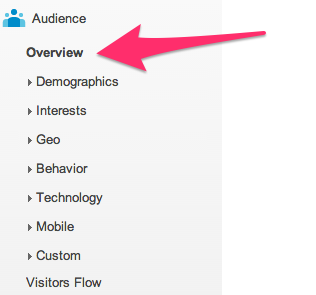


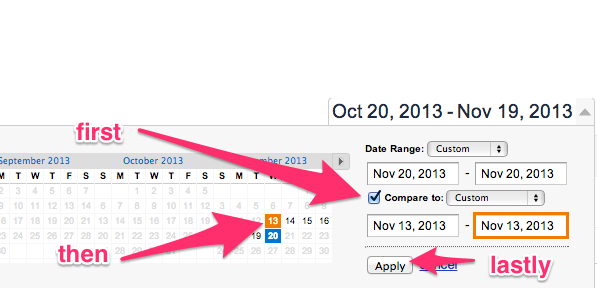
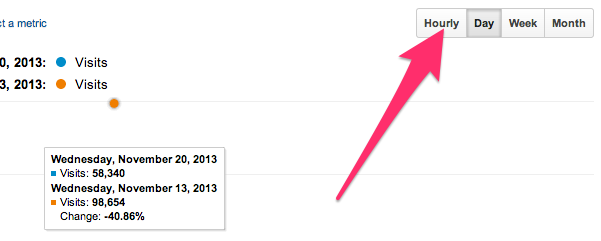
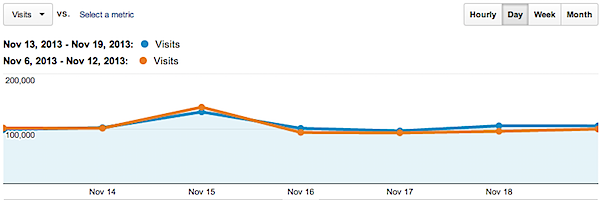
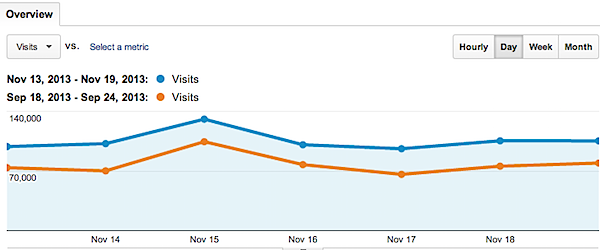
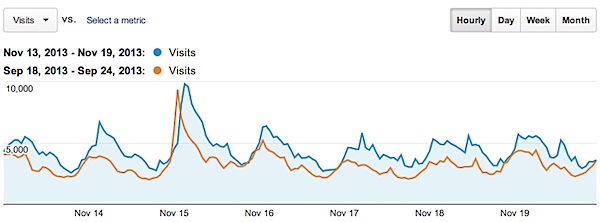
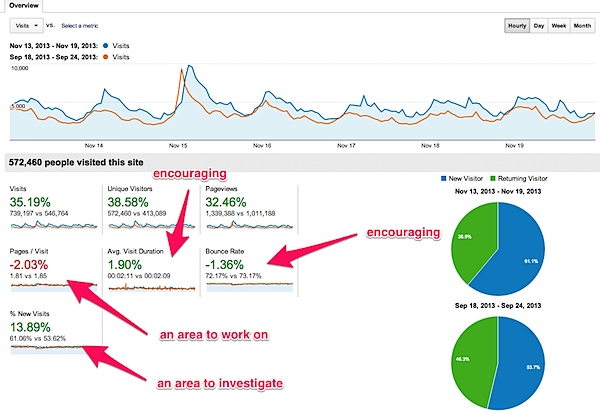
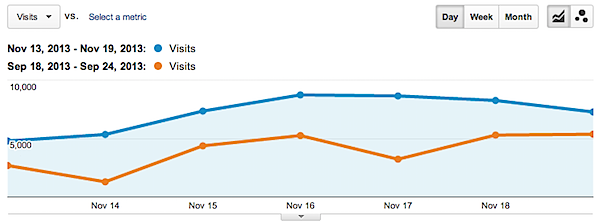
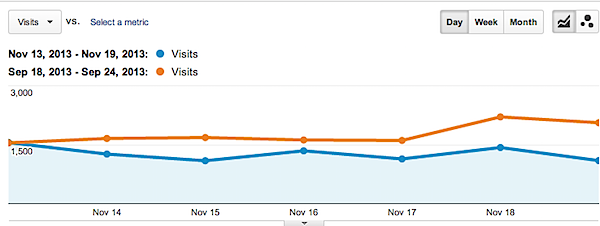


.jpg)